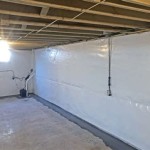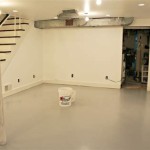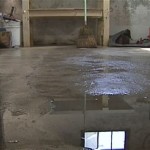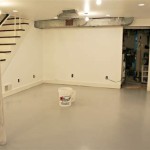How To Install A Sump Pump In Your Basement
Water accumulating in a basement can lead to significant property damage, including structural issues, mold growth, and loss of personal belongings. A sump pump is a preventative measure designed to remove excess water from beneath a building's foundation and redirect it away from the structure. Installing a sump pump requires careful planning and execution to ensure effective water management and prevent future basement flooding.
This article provides a detailed guide on how to install a sump pump in a basement. It outlines the necessary tools and materials, preparation steps, and the installation process itself. This information is intended for individuals with a reasonable level of DIY experience and an understanding of basic plumbing and electrical safety practices. If unsure about any aspect of the installation, it is recommended to consult with a qualified professional.
Assessing the Need and Choosing a Sump Pump
Before beginning the installation process, it is crucial to accurately assess the need for a sump pump and select the appropriate model. Factors to consider include the severity of water accumulation in the basement, the frequency of flooding, the level of the water table, and the size of the basement. A thorough assessment will help determine the necessary pumping capacity and type of sump pump required.
Sump pumps are generally categorized into two main types: submersible and pedestal. Submersible pumps are designed to be submerged in the sump pit, offering quieter operation and greater pumping power. Pedestal pumps, on the other hand, are positioned above the sump pit, with only the intake pipe submerged. Submersible pumps are generally preferred for their efficiency and reliability, although pedestal pumps may be more accessible for maintenance and repairs.
Pumping capacity, measured in gallons per hour (GPH), is another critical factor to consider. The required GPH will depend on the volume of water typically accumulated in the basement. A higher GPH rating indicates a more powerful pump that can remove water more quickly. Consult with a local hardware store or plumbing professional to determine the appropriate GPH for the specific basement conditions.
Additional features to consider when choosing a sump pump include the type of switch (float or electronic), backup power options (battery or generator), and alarm systems that alert homeowners to pump failures or high water levels. Choosing a pump with the appropriate features will enhance its effectiveness and reliability.
Gathering Tools and Materials
Having all the necessary tools and materials on hand before starting the installation will streamline the process and minimize potential delays. The following is a comprehensive list of items required for a typical sump pump installation:
*Sump Pump: Selected based on the assessment of need and pumping capacity.
*Sump Basin: A plastic or concrete container that holds the pump and collects water.
*Discharge Pipe: PVC or flexible tubing used to carry water away from the pump.
*Check Valve: Prevents water from flowing back into the sump pit after the pump shuts off.
*Pipe Fittings: Connectors, elbows, and adapters needed to assemble the discharge pipe.
*Drill with Concrete Drill Bit: To create a hole for the discharge pipe if necessary.
*Shovel or Post Hole Digger: For excavating the sump pit.
*Level: To ensure the sump basin is installed level.
*Measuring Tape: For accurate measurements during installation.
*PVC Primer and Cement: To join PVC pipes and fittings.
*Adjustable Wrench: To tighten pipe fittings.
*Safety Glasses and Gloves: To protect eyes and hands during the installation process.
*Electrical Extension Cord (if needed): To reach the nearest electrical outlet.
*Backflow Preventer (as required by local codes): To prevent contaminated water from flowing back into the potable water supply.
Ensuring all these materials are readily available will facilitate a smooth and efficient installation. It is advisable to double-check the list before starting the project to avoid interruptions.
Step-by-Step Installation Process
The following steps outline the process of installing a sump pump in a basement. Prior to beginning, disconnect the power to the area where the sump pump will be installed to prevent electrical shock.
1. Prepare the Sump Pit: The first step involves creating a sump pit to house the sump basin. If a sump pit already exists, inspect it for damage and ensure it is clean and free of debris. If a new pit needs to be created, choose a location in the lowest part of the basement, ideally near an exterior wall. Use a shovel or post hole digger to excavate a hole that is slightly larger than the sump basin. The depth should be sufficient to allow the top of the basin to be flush with the basement floor.
2. Install the Sump Basin: Place the sump basin into the excavated pit and use a level to ensure it is sitting level. Backfill around the basin with gravel or small stones to provide a stable base and promote drainage. This helps prevent sediment from entering the pump. Ensure that there is enough space around the basin for the pump and its components.
3. Install the Sump Pump: Place the sump pump inside the basin. Consult the manufacturer's instructions for specific installation guidelines. Ensure the pump is positioned upright and securely within the basin. If the pump has a float switch, ensure it can move freely without obstruction.
4. Assemble the Discharge Pipe: Connect the discharge pipe to the pump's outlet. Use the appropriate pipe fittings and PVC primer and cement to create a secure, watertight connection. Install a check valve in the discharge pipe above the pump to prevent backflow. The check valve should be oriented to allow water to flow upwards and outwards. Extend the discharge pipe to an exterior wall where it can be routed outside the house. Make sure the discharge pipe slopes continuously downward to prevent water from freezing in the pipe during cold weather.
5. Create an Outlet for the Discharge Pipe: Drill a hole through the exterior wall to accommodate the discharge pipe. The hole should be large enough to allow the pipe to pass through without obstruction. Seal the hole around the pipe with caulk or sealant to prevent water and air from entering the basement. Ensure the outlet is positioned away from the foundation and any nearby landscaping to prevent water from seeping back into the house.
6. Connect the Discharge Pipe to the Exterior: Extend the discharge pipe away from the house. If local codes require a backflow preventer, install it at this point. The end of the discharge pipe should be positioned in a location where water can drain away freely, such as a drainage ditch or a designated discharge area. Consider using a splash block or extension pipe to direct water further away from the foundation.
7. Connect the Power Supply: Plug the sump pump into a grounded electrical outlet. If an extension cord is necessary, use a heavy-duty outdoor-rated cord. Test the pump by pouring water into the sump basin. Observe the pump's operation to ensure it starts and stops correctly and that water is being discharged effectively. Adjust the float switch or electronic sensor as needed to achieve the desired water level.
8. Final Inspection and Testing: Once the installation is complete, conduct a thorough inspection to ensure all connections are secure and that the pump is functioning correctly. Fill the sump basin with water several times to simulate heavy rainfall and verify that the pump can handle the volume effectively. Check for any leaks or unusual noises during operation. Address any issues promptly to prevent future problems.
Post-Installation Maintenance and Troubleshooting
Regular maintenance is essential to ensure the continued effectiveness and longevity of the sump pump. Performing routine checks and addressing potential issues promptly can prevent costly repairs and basement flooding.
1. Regular Inspections: Inspect the sump pump at least twice a year, ideally in the spring and fall. Check the sump basin for debris, sediment, and obstructions. Clean the basin as needed to ensure the pump can operate freely. Examine the discharge pipe for cracks, leaks, or blockages. Ensure the check valve is functioning properly and preventing backflow.
2. Pump Testing: Periodically test the sump pump by pouring water into the basin to activate the pump. Observe the pump's operation to ensure it starts and stops correctly and that water is being discharged effectively. Listen for any unusual noises or vibrations that may indicate a problem with the pump.
3. Cleaning the Impeller: The impeller is the part of the pump that spins and moves water. Over time, it can become clogged with debris, reducing the pump's efficiency. Clean the impeller regularly by removing the pump from the basin and flushing it with water. Use a small brush to remove any stubborn debris.
4. Check the Float Switch: The float switch is responsible for turning the pump on and off. Ensure the float can move freely without obstruction. Clean the float as needed to remove any debris that may be interfering with its operation. If the float switch is damaged or malfunctioning, replace it promptly.
5. Battery Backup System Maintenance: If the sump pump is equipped with a battery backup system, test the battery regularly to ensure it is fully charged and functioning correctly. Replace the battery every few years as recommended by the manufacturer. Check the battery terminals for corrosion and clean them as needed.
6. Common Troubleshooting Issues:
* Sump pump not turning on: Check the power supply, circuit breaker, and float switch.
* Sump pump running continuously: Check the float switch for obstructions or damage.
* Sump pump making unusual noises: Inspect the impeller for debris or damage.
* Water not being discharged effectively: Check the discharge pipe for blockages or leaks.
By following these maintenance and troubleshooting tips, can maintain a functioning sump pump, preventing water damage.

Diy Sump Pump Install Your Own Smd Fluid Controls

Sump Pump Installation In Minneapolis Paul Bunyan

Diy Sump Pump Install Your Own Smd Fluid Controls

Sump Pump Installation How To Install A Homeserve Usa

How To Install A Sump Pump

Installing A Sump Pump In Our Basement Youtube

Basement Sump Pump Sedona Waterproofing Solutions

Tips For Installing Sump Pumps 2024 10 17 Plumbing And Mechanical

How To Install A Sump Pump Apex Concrete Services

How To Install A Sump Pump Installation Hamilton
See Also








